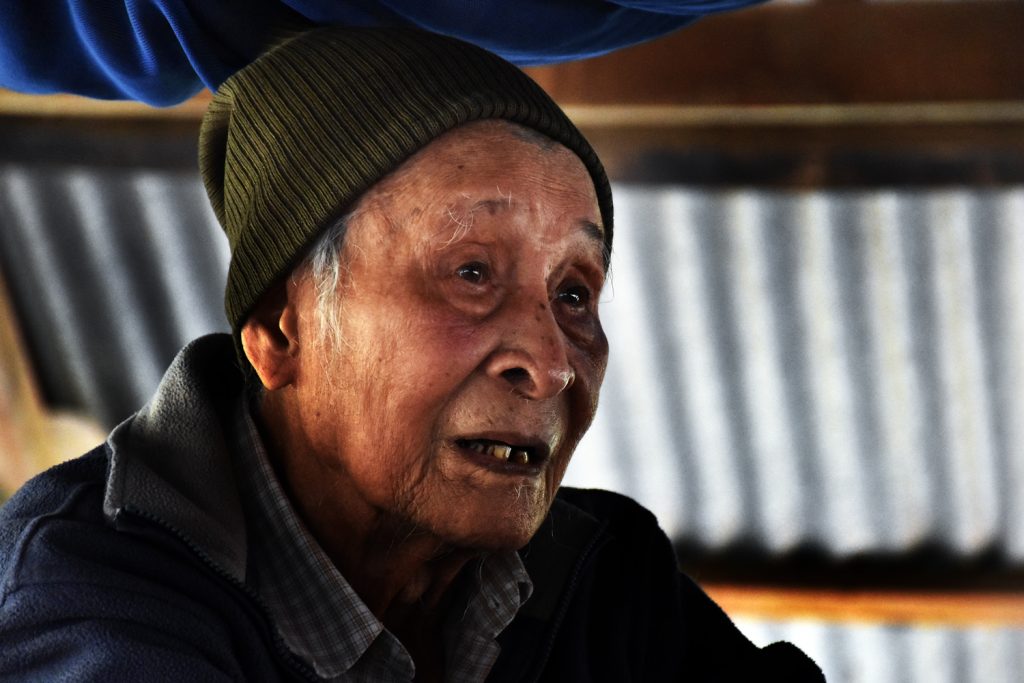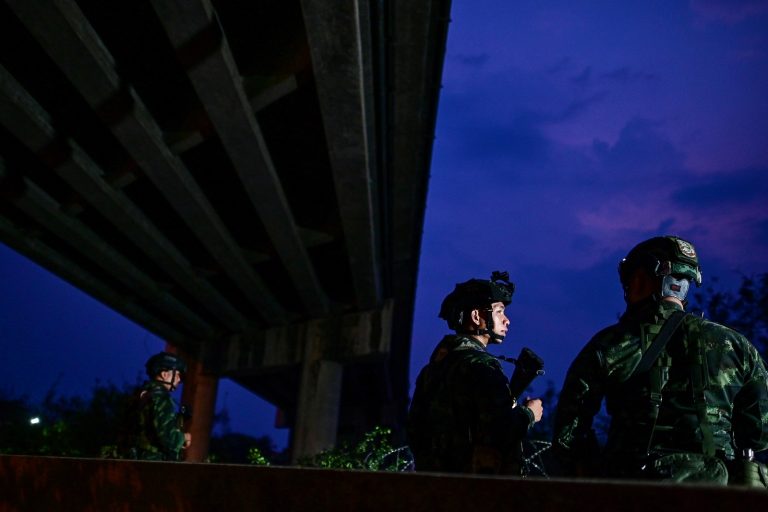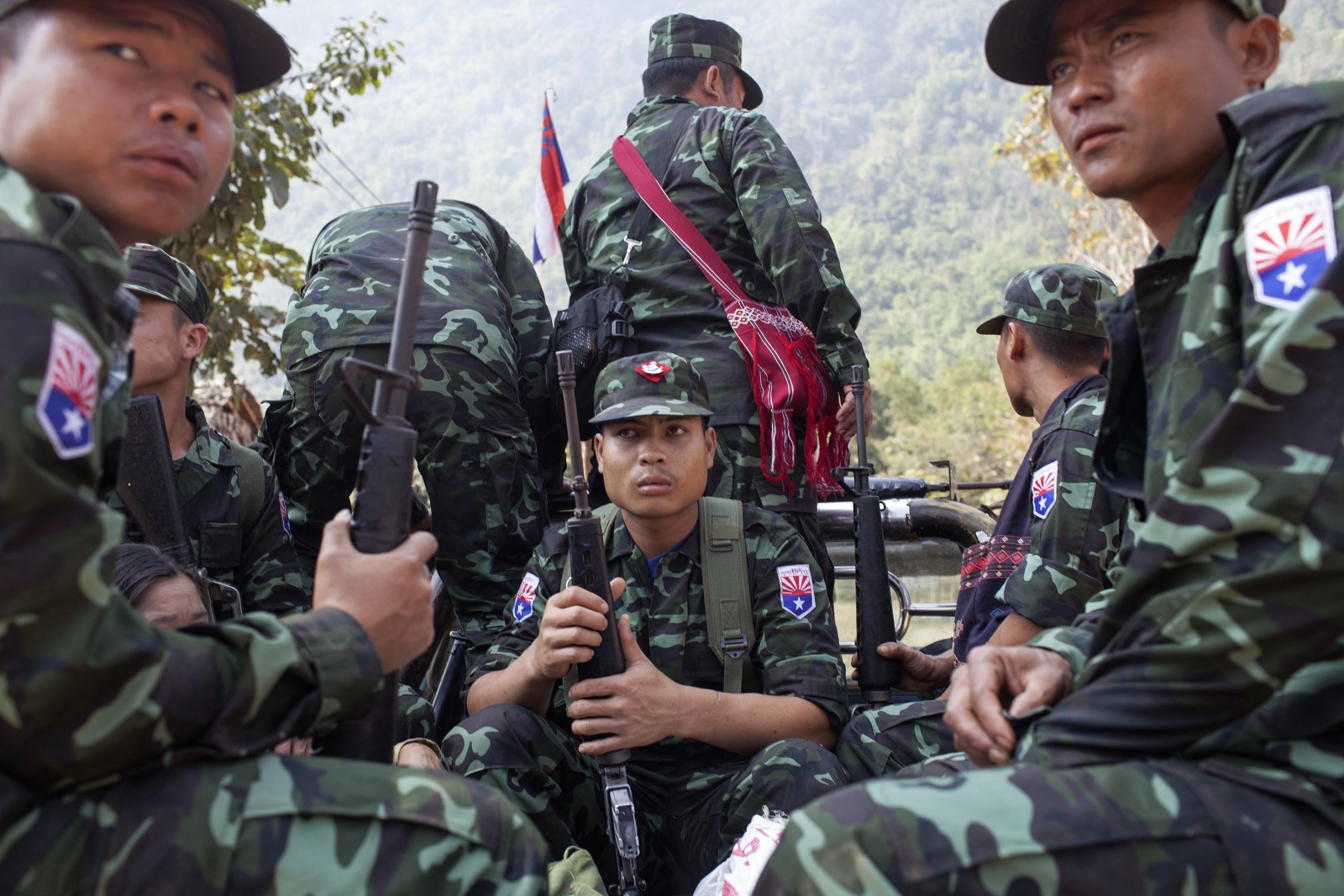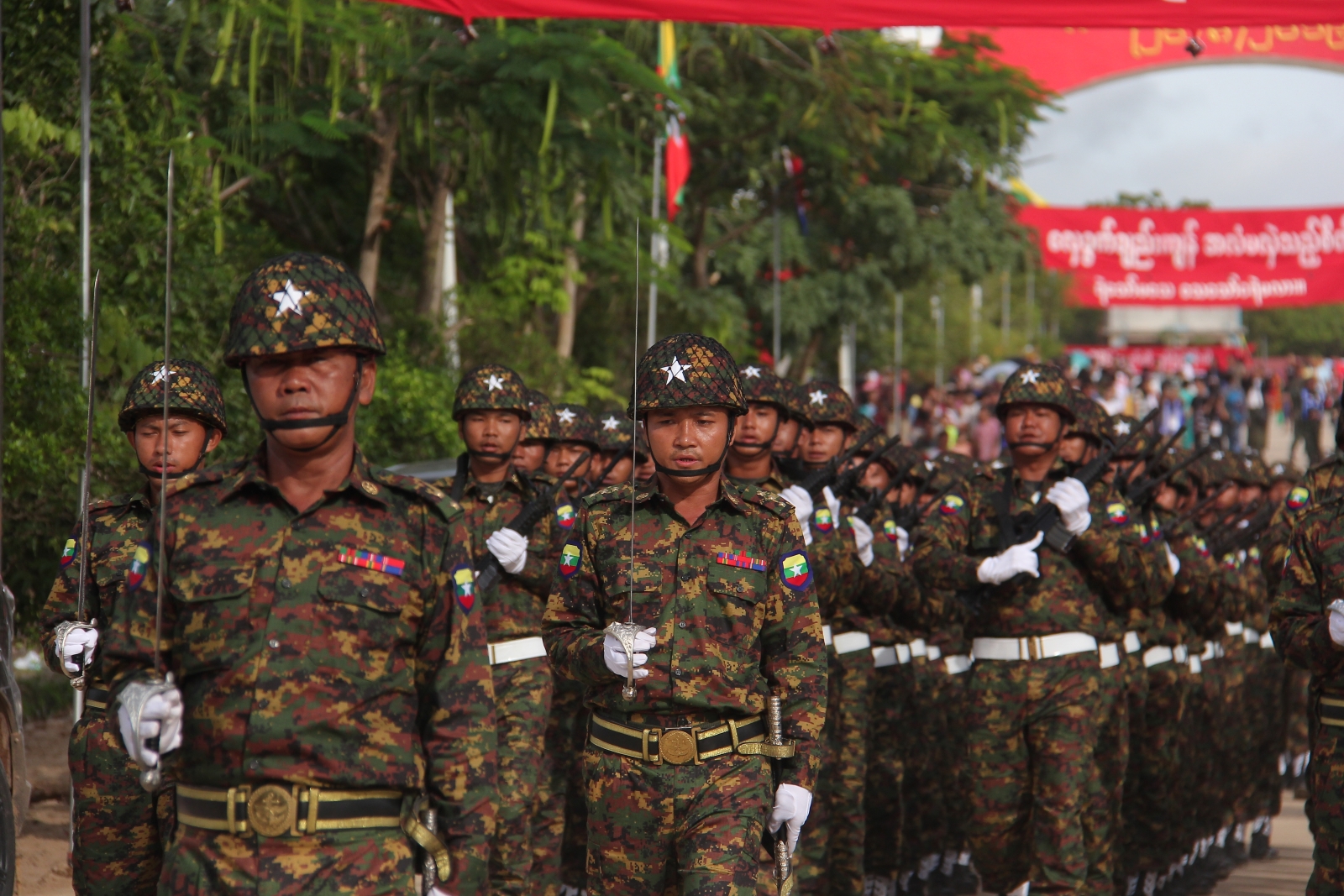As tensions peaked between Karen and Bamar in early 1949, Burmese irregular forces committed a series of mass killings on the outskirts of the then-capital that have never been officially acknowledged.
By FRONTIER
Saw Maung Tin, 96, can vividly recall the horrific scenes he witnessed 72 years ago at his village of Kyoe Kone, a community of 100 households and about 300 people in Yangon Region’s northernmost Taikkyi Township.
He was herding buffaloes one Sunday afternoon in early 1949 when a contingent of Auxiliary Union Military Police arrived at the Karen village and intercepted a group of people returning from church. From among the group of churchgoers, the UMP suddenly removed about 30 young men and herded them to the bank of a paddy field near the entrance to the village.
“They were all young and they looked confused; they didn’t understand why they had been separated from the others,” Maung Tin said.
When he describes what happened next, Maung Tin becomes visibly distressed.
“It was a massacre,” he continued in Sgaw Karen, the language spoken by Karen residents in the area. “The sight of my fellow villagers being killed has haunted me all my life.”
Maung Tin said he hid behind his buffaloes so the armed men couldn’t see him. About an hour later, some village committee members and the fathers of the boys arrived at the scene. “They were also shot,” he said.
The UMP contingent moved to other villages after the massacre. Relatives of the victims loaded their bodies on carts and took them to the cemetery.
“I will never forget the blood and the sound of villagers crying,” said Maung Tin.
“Only four of us escaped death that day; the others were my friends Saw Pay Htoo, Phoe That Shay and Saw Maung Htoo,” he added. “They have all [since] died and may God bless them.”

The Karen Revolution begins
The massacre occurred at a time of high political tension between the Bamar and the Karen – tension that would soon erupt into a civil war that continues to this day.
In the wake of World War Two, in which the Karen had stayed loyal to the British and fought the Japanese and their Burmese nationalist allies, Karen leaders had lobbied the colonial government for the creation of a large, autonomous “Karen State” covering modern-day Karen and Mon states, as well as Tanintharyi Region, in an independent Burma. When this demand was ignored, they boycotted the Panglong Conference of February 1947 – which led to an agreement between Burmese nationalist leader General Aung San and Shan, Kachin and Chin leaders to form a Union of Burma on independence – as well as constituent elections for the drafting of a new constitution.
Around the time of the Panglong conference, Karen leaders, notably a lawyer named Saw Ba U Gyi, formed the Karen National Union to spearhead the struggle for autonomy. They soon established armed Karen National Defence Organisations – forerunners of an integrated Karen National Liberation Army – to protect Karen communities.
However, after independence in January 1948, many Karen in the civil service and national armed forces – including Commander-in-Chief Lieutenant-General Smith Dun – remained loyal to the Burmese government. Their leadership and commitment were essential for staving off the threat from the Communist Party of Burma, which had launched a rebellion that looked capable of toppling the administration of Prime Minister U Nu in Yangon, then called Rangoon.
As the year dragged on, though, tensions between the Bamar and Karen began to boil over. Some KNDOs revolted against the government and seized control of towns in lower Burma. Partly in response to this threat, Burmese military leaders supplemented the armed forces by creating the Auxiliary Union Military Police and militias known as Burma Territorial Forces, or in Burmese sitwundan tat. These short-lived irregular forces became notorious for their violence and lack of discipline, and would play a key role in pushing Burma to all-out civil war.
On Christmas Eve, around 80 Karen civilians were reportedly killed in Palaw, Tanintharyi Region, when members of either the Auxiliary Union Military Police or a BTF threw hand grenades into a church, though some put the death toll as high as 300.
When the Burmese irregular forces launched further attacks on Karen communities, including in Rangoon and the neighbouring Irrawaddy (Ayeyarwady) Delta, home to many historic Karen villages, the KNDO reportedly responded in kind. The Rangoon press was accused of stoking communal tensions, particularly by playing up the threat KNDOs posed to ethnic Bamar, and U Nu’s government was unable or unwilling to stop the violence. “All over the Delta the night sky turned red and villages burned,” the historian Hugh Tinker wrote in his 1957 book The Union of Burma: A Study of the First Years of Independence.
On January 31, 1949, the Burmese irregulars targeted Karen communities at Thamaing and Ahlone in Rangoon. Later that day, Smith Dun resigned as head of the armed forces and was replaced by his deputy, Major General Ne Win. Open fighting then broke out between Karen and Burmese forces at the northern Rangoon suburb of Insein. The Karen Revolution had begun.
The killings at Kyoe Kone in Taikkyi Township are thought to have been among the largest of this period, but it’s not exactly clear when they took place. Several residents insisted to Frontier it was February 1949, but numerous sources, including Tinker, make reference to a massacre in a Karen village in the area that January, citing a report in the Rangoon Nation newspaper on January 16. This would place it before the Karen Revolution, among the bloody events that sparked the seven-decade conflict. Frontier contacted the National Archives in mid-January to gain access to copies of the Nation, but was told the archives were closed to the public due to COVID-19.
Tinker describes the “bombardment” of a village in Taikkyi by Auxiliary Union Military Police led by Bo Sein Hman, which resulted in over 150 deaths. These include 30 who were “deliberately executed”, the same number as in the account Frontier heard from Kyoe Kone local Maung Tin.
Less well known is that in the months after the massacre at Kyoe Kone, other Karen communities in Taikkyi were also targeted. These events are difficult to corroborate, but residents told Frontier that mass killings took place in at least six villages throughout 1949.

No condolences, no apologies
For Maung Tin, the Kyoe Kone massacre was not just a seminal moment in the Karen Revolution; it also changed the course of his life. Devastated by what he’d witnessed, he left his village the next day to join a KNDO.
He served for almost three decades before retiring at the age of 50 and settling back in Kyoe Kone village, where today he has 10 children, 29 grandchildren and 10 great-grandchildren.
Speaking to Frontier in January this year, shortly before the February 1 military coup, Maung Tin was still angry about the attacks on civilians in 1949 and the failure of any government or military leaders since then to acknowledge the atrocities.
“I am 96 and will not live much longer, but never during my life have I heard anyone in the Tatmadaw express condolences for the killing of Karen,” he said. “The past is over; no one wants to try to reset it. But for the villagers whose relatives were killed, the authorities should officially acknowledge what happened and express their sympathies.”
Although they didn’t witness the massacre first-hand, other residents of Kyoe Kone are determined to ensure the event is not forgotten. Saw Kanarni, a committee member of the Kyoe Kone Karen Baptist Church, said his grandfather’s younger brother was among the victims that day.
Kanarni’s father, who was 13 at the time of the massacre and died two years ago, told him that while residents were tending to the bodies of their loved ones, the UMP troops returned to the village and burnt down the church and some nearby houses.
“My father used to tell me about his uncle who was killed by Burmese soldiers,” said Kanarni, 62. “I remember him joining the memorial events every year. He said all he can do for the massacre victims is to pray for them.”
Kanarni’s elder sister, Naw Kamu, 64, is the church’s pastor. She told Frontier it was built in 1900 and after being burnt down in 1949 was rebuilt as a small wooden structure in 1953. It was replaced by a bigger church built by villagers in 1998, according to a plaque written in Sgaw Karen.
Kamu said residents of Kyoe Kone and nearby villages commemorate the victims of the 1949 massacres during a church service held each November, after the paddy harvest.
“The event is very simple; relatives of the victims come to the church and pray for them,” she said.
Kanarni said no memorial event could be held last year because of COVID-19.
“The congregation is usually more than 30 people, but the memorial service might have attracted more than 100 so we could not hold it,” he said. “Instead we prayed for them alone.”

A trail of death
The neighbouring Karen village of Shan Kwin was also ravaged by Burmese irregular forces. Called Sar Pyi Hsu by many of the local Karen, the village today has 60 households and a population of 150, who still live with the trauma of 1949.
Saw Tun Aung, 78, the pastor of the Shan Kwin Karen Baptist Church, said his father was murdered by axe-wielding Burmese troops on August 25 that year in a massacre that also claimed the lives of his grandfather and five other elderly Karen.
“Burmese troops accused us of being Karen rebels or their supporters; I was 10 years old at the time,” he said. “The soldiers said they were BTF – I don’t know what that means.”
The village had been established 50 years earlier, in 1899. After being burnt to the ground by the Burmese irregular forces, it was eventually rebuilt in 1953.
“Residents faced great hardship in those four years [after 1949],” Tun Aung said, showing an old diary in which he had recorded details of the massacres in the area.
The diary says Shan Kwin, Kyoe Kone and four other villages in the area were torched and more than 150 people were killed in total.
Only one of the four other villages was re-established, he said.
Like Maung Tin in Kyoe Kone, Tun Aung said it saddened him that the authorities had never publicly mentioned the massacres. The lack of official acknowledgement has meant that the mass killings are not widely known in Myanmar, and many people consider them to be rumour rather than fact.
“I don’t want to blame anyone for what happened in the past. It is God’s will,” he said. “But I grieve for those who were killed and pray for their relatives who remain.”







